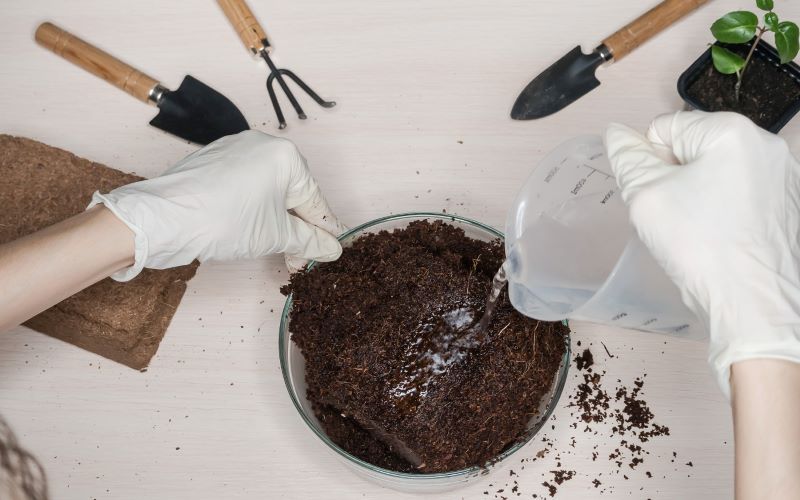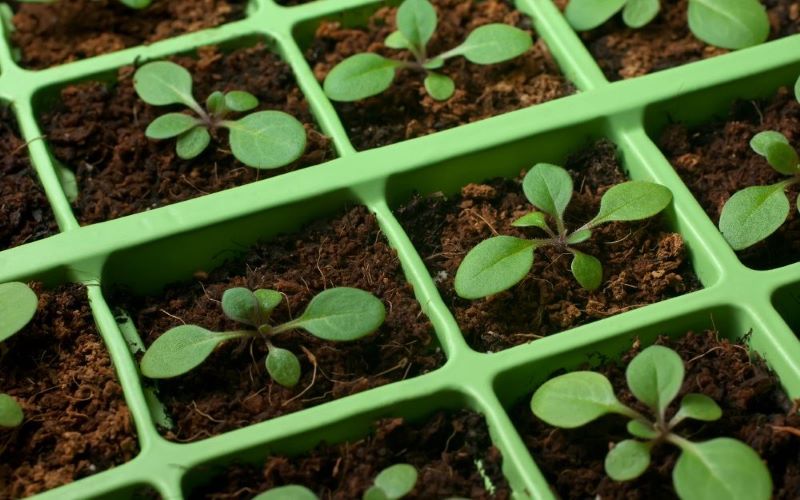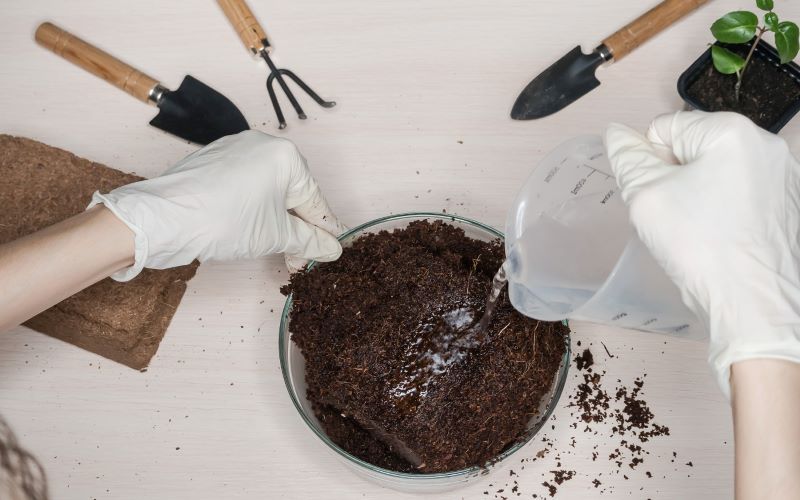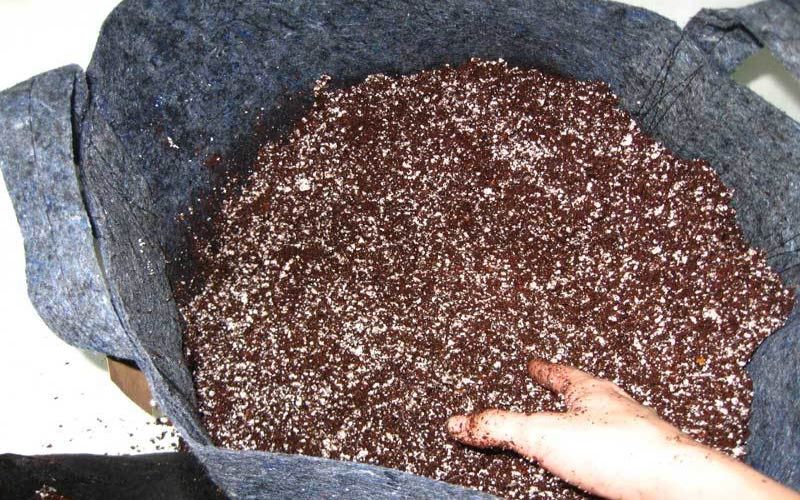Should we buffer coco coir before using? How to prepare and buffer it?
Should we buffer coco coir before using? How to prepare and buffer it?

When you prepare and buffer coco coir, you ensure that your plants are growing in the best growing media. This article is introducing you to the process of preparing and buffering coco coir. Besides, why do you need to buffer your coco coir before using? Please take about 10 minutes to find your answers to those questions through the article below.
Why do we need to buffer coco coir
The natural coco coir has some negative electric charges which attract the positive ion (or the caption). People call the total number of cations that coir can hold or exchange as the Cation Exchange Capacity (CEC). Fundamentally, CEC will enable us to determine how many nutrients the growing media can hold before starting leaching. The CEC of coco coir is normally from 40 meq to 100 meq per 100 gram . This means that coco coir can hold nutrients but can also lock particular nutrients out, leading to the nutrient-deficiency in your plant.
We know that coconut trees have the natural ability to tolerate salt – sodium chloride. Therefore, most coconut trees can grow healthily along the coasts. This means that the cation-exchange sites of coco coir saturate with sodium naturally. The CEC of coco coir naturally fills with low amounts of calcium and magnesium, and large amount of potassium. Sodium, calcium, magnesium and potassium are 4 most important cations when we buffer coco coir.
Coco coir initially has an electrical conductivity level of up to 6 millisecond per centimeter – an incredibly high number for growing media. Therefore, to get the high-quality coco coir, some people wash the coir until its electrical conductivity is below 1 millisecond per centimeter. However, even after washing, there is still some residual sodium and potassium in the coco fibers. So we can just only remove all of them by buffering. When we buffer coco coir, we are removing elements naturally linking with the cation exchange of coco fibers. The goal of us to buffer coco coir is to lower the amount of CEC sites attaching potassium and magnesium.
How to prepare and buffer coco coir?
Rehydrate and Rinse
First, we should rehydrate the coir under the tap water. The rehydrating process will take place very quickly because coco coir loves absorbing water. Then, the coir will turn into slurry. You should have it rinsed over a screen to get the finest coco particles – the coco peat. Ending up at this stage, your goal is to get the larger coco fibers. Then, you can use a kind of ⅛-inch mesh screen or a perforated one. These screens are perfect for you to rinse the peat.
Buffer coco coir
After the process of rehydrating and rinsing coco coir, you need to buffer it before using. We recommend double buffering, which ensures that you will fully satisfy the cation-exchange sites with calcium and magnesium. After buffering, the cation exchange is no longer preventing your plants’ growth. The plants will take nutrients ,including calcium and magnesium, directly from the nutrient solution.
Double-buffer coco coir
First, you need to prepare the buffering solution. It consists of:
- The tap water for buffering solution.
- At least 7.5 millimeter per gallon of General Hydroponics CaliMagic to provide the sufficient amounts of calcium and magnesium.
- The electrical conductivity of the buffering solution should be between 1200 and 2000 millisecond per centimeter.
- The value of pH of the buffering solution should be at least 6.2 pH.
After preparing, you place coco coir in a fabric pot, then place it into a bucket with the size of 5 gallons. You soak the coco completely in the buffering solution within 8 hours. Then you take the fabric pot out of the bucket and let it drain. This is the first-buffer coco coir. You double the process by soaking it in the fresh buffering solution one more time within 8 hours. Finally, you can drain it and mix it with perlite.
Mix coco coir with perlite
Perlite is an ingredient helping coco coir significantly improve its drainage of water and aeration. Besides, because it can improve the amount of water flowing through growing media, it also improves the flushing of salts that you do not want. Without perlite, coco coir can not drain as well. However, in some containers whose drainage is better, you can reduce the number of perlites to help the roots have much more space. When following a strategy of transplant, you should mix the number of perlites at ratios suitable to the containers. Below are some ratios to mix coco coir with perlite we recommend you.
| Container size | Quantity of media (gallon) | Perlite (%) | Perlite Volume (quart) | Coco dry weight (gram) |
| 2 | 2 | < 20 | < 1 | 450 |
| 3 | 3 | 30 | 2 | 550 |
| 5 | 4 | 40 | 4 | 650 |
| 7 | 5.5 | 50 | 6 | 800 |
| 10 | 8 | 50 | 9 | 1250 |
Conclusion
Above is the article about how to prepare and buffer coco coir which Tropicoco Vietnam informs. Nowadays, most suppliers just only wash but not buffer coco coir because they have not realized the importance of this process. So please make sure you know exactly where to buy the products with the highest quality. If you are embarrassed to look for a trustworthy manufacturer of coir and related products in Vietnam, please make a call to Tropicoco immediately.
Contact information
Tropicoco – The best substrate
Address: No.20 Ngan Long Villa, Nguyen Huu Tho street, Nha Be dist, Ho Chi Minh City
Email: giathe@tropical.vn
Hotline: +84 983230879
Open Hours: Mon-Sat: 8.00AM-5.00PM; Sunday: Closed




